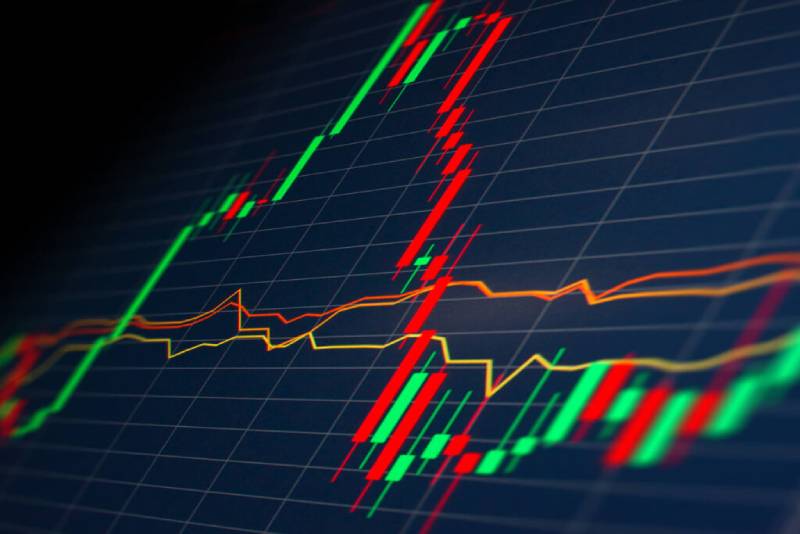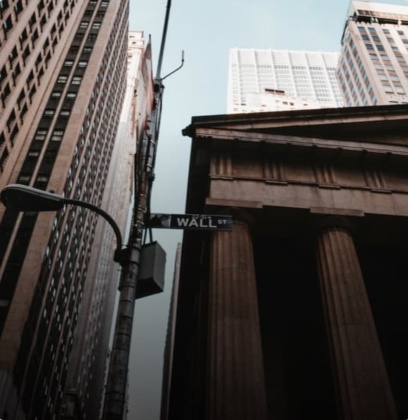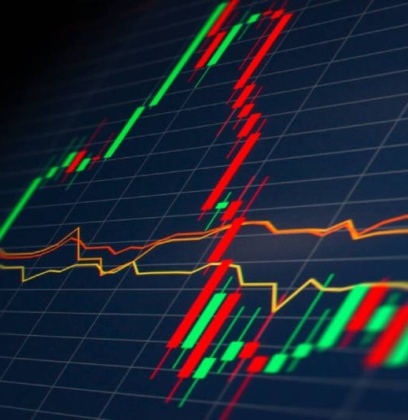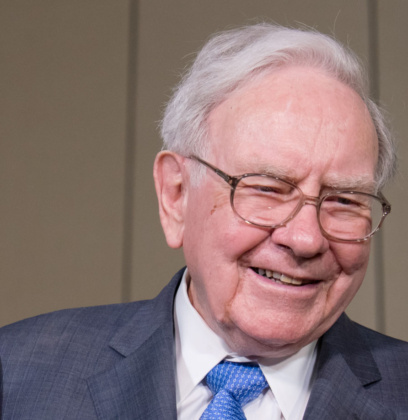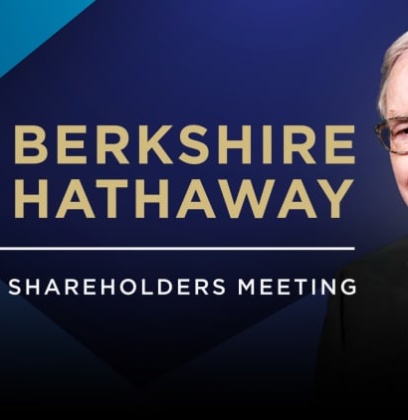Looking to invest in one of the largest conglomerates in the world, built from the ground up by one of the world’s most renowned investors and business icons? With a long-standing history of solid financial and compounding success since its inception, it is likely that one of your candidates is Berkshire Hathaway (BRK), the famous brainchild of Warren Buffet.
Berkshire Hathaway is one of the most successful investment firms in the world. It’s no wonder that many investors, locally and internationally, are now looking to buy Berkshire Hathaway shares in Australia to bolster their long-term shareholders.
Berkshire Hathaway is an amalgamation of companies with shareholdings in some of the world’s biggest and most successful companies. Since its inception, the business has been gathering colossal traction — with the overall return of Berkshire Hathaway’s stock sitting at 2,744,062% between 1965 to 2019; during this same period, the S&P 500 returned “just” 19,784%.
Berkshire Hathaway’s stock is rated for its continued future potential growth, with further expansion of its “value investing” vision as it continues to invest in new and rising businesses.
The Brain Behind Berkshire Hathaway
Virtually every investor across the world has heard of the “Oracle from Omaha” Warren Buffett. One of the wealthiest individuals in the world, Buffet has a net worth of 110.6 billion USD (as of November 2022). Buffet has long been hailed as an investment genius, philanthropist and astute businessman, with many investors, individuals and firms alike adopting his investment strategies.
For decades, his ability to increase returns at an incredible pace has significantly increased his personal fortune. He has also accomplished great things for the shareholders of Berkshire Hathaway, his investment firm.
What is Berkshire Hathaway and What Does it Do?
Berkshire Hathaway is a multinational conglomerate holding company based in the United States. It was founded by Warren Buffett and Charlie Munger in 1839. The company is named after two textile manufacturing companies: the Berkshire Fine Spinning Associates and the Hathaway Manufacturing Company, which merged in 1955.
Berkshire Hathaway has a penchant for the acquisition of insurance companies, including:
- National Indemnity Company, acquired in 1967
- National Fire & Marine Insurance Company, acquired in 1967
- Geico, acquired in 1996
In addition, Buffett liquidated the textile operations of the company in 1985 and solidified its transition into Berkshire Hathaway holdings.
Ever since, this investment giant has created and maintained a diverse portfolio, acquiring interests in or acquiring entire companies across various industries such as:
- Financial services;
- FMCG;
- Apparel;
- Transportation;
- Cloud computing and;
- Artificial Intelligence.
With Warren Buffet and Charlie Munger at the wheel, Berkshire Hathaway has expanded into one of the world’s biggest conglomerates.
It is important for potential investors to note that, despite the size and massive profitability of Berkshire Hathaway, the NYSE-listed company does not pay dividends. Instead, it believes that by holding the cash and reinvesting profits, it can produce a better outcome for shareholders.
Berkshire Hathaway Shares at a Glance
From 1965 to 2019, the year-on-year Berkshire Hathaway shares exceeded the S&P 500 index by more than 200%. Berkshire’s stock generated an annualised 20.3% over that period, while the S&P 500’s annualised gain was 10%.
Buffett announced in 2010 that a team composed of one CEO and two to four investment managers would succeed him at Berkshire Hathaway. It was announced in 2011 that two of those would be hedge fund managers, Todd Combs and Ted Weschler. Buffett is still the chairman and CEO as of 2022.
Even after his eventual exit, Buffett does seem to be setting the business up for future success. The company selected Ajit Jain to lead as Vice Chairman of Insurance Operations for Berkshire Hathaway in 2018 and appointed Greg Abel, the Chairman and CEO of Berkshire Hathaway Energy.
The continued performance of Berkshire Hathaway will always raise the question of succession, with the big-ticket item currently being: “Can Buffett’s replacement continue the streak of market out-performance?”. Considering Buffet reached the ripe age of 90 in August of 2020, this question will continue to stay at the peak of mainstream prominence as time goes by.
Berkshire Hathaway Today
Berkshire Hathaway currently operates businesses in four main sectors with its insurance group being one of its largest earners.
One of the most famous insurance companies in the group is the aforementioned Geico, with a revenue of $25.483 billion USD in 2017, the second largest auto insurance company in the United States. Other areas of this business include multinational property, life and health reinsurance company General Re and Berkshire Hathaway Reinsurance Group. The latter underwrites excess-of-loss reinsurance and quota-share coverage, globally. Berkshire Hathaway Insurance operations are a major factor which impacts earnings every year.
Berkshire Hathaway Stock Holdings
A holding company is a business that owns many other companies, and Berkshire Hathaway is the cream of the crop. Below is a non-exhaustive list of major companies that Berkshire Hathaway either owns partly or wholly:
A Non-Exhaustive Listing of Major Companies That Berkshire Hathaway Owns Partly or Wholly
- Berkshire Hathaway GUARD Insurance Companies
- Geico Auto Insurance
- Travellers Companies
- United States Liability Insurance Group
- American Express
- Bank of America
- Bank of New York Mellon
- Goldman Sachs Group
- JPMorgan Chase & Co
- Mastercard
- Moody’s Corporation
- U.S. Bancorp
- Visa
- Wells Fargo & Co.
- Coca-Cola
- Kraft-Heinz
- Restaurant Brands International
- Amazon
- Costco
- American Airlines
- Delta Air Lines
- Southwest Airlines
- United Airlines
Buying Berkshire Hathaway Shares on the ASX
To invest in BRK B-A on the ASX, you can do so via a listed investment company (LIC). As an LIC, Global Masters Fund (ASX: GFL) retains Berkshire Hathaway shares as the majority of its holdings. It might be unfamiliar to typical investors and SMSFs due to its $23.05 million market capitalisation (as of December 2020).
As of November 28th 2022, 64.93% of the GFL’s portfolio consisted of Berkshire Hathaway shares. In addition, shares in the Global Masters Fund rose 10.2% in value in December 2020, comfortably exceeding the market average.
BRK shares are sold on the New York Stock Exchange (NYSE), so if you’re looking for Berkshire Hathaway share prices on the ASX, you, unfortunately, won’t find them. There are some ways around it, though, such as:
- Opening up an international trading account (can be complicated and time-consuming, especially from a tax purpose perspective);
- Buy CFDs for Berkshire Hathaway (Highly risky, especially for new investors);
- Buy shares in a company that has assets placed in Berkshire Hathaway, like Global Masters Fund.
Global Masters Fund offers a great alternative. Like Berkshire Hathaway, we don’t pay a dividend, but the share price has steadily grown since our inception, delivering stellar results for long-term value investors.
Plus, investing this way is a more cost-effective option and means you can avoid the hassle of having to trade on a major exchange.
Interested in investing and want to learn more?
Berkshire Hathaway Stock Class A & B: Is There a Difference?
The most evident difference between the A-class (BRK-A) and B-class (BRK-B) Berkshire Hathaway Inc. shares is the price. While BRK-B stock can be considered fairly pricey, the most expensive on the market is BRK-A stock. Both stock classes of the organisation are traded on the New York Stock Exchange.
New and low-value investors wanting to purchase shares in Hathaway without the big markup usually purchase Class B shares due to the lower cost. As of November 29th 2022, Class B shares are trading for just over US$313, while Class A shares cost US$472,712.
There are some key differences that make Class A shares a more attractive option for some investors:
- Class A shares have historically outperformed Class B.
- Class A shares can be converted into Class B shares, but the opposite cannot be accomplished.
- Class B shares can be split. Buffet has guaranteed shareholders that Class A will never experience this.
- The “status” and prestige of owning Class A will be more lucrative and attractive for some investors.
It is important to note that despite BRKB-A stocks being the golden egg, Berkshire Hathaway’s Class B shares have also outperformed the S&P 500 for years.
Why should an individual invest in Berkshire Hathaway?
There are several benefits to investing in Berkshire Hathaway. Let’s examine some:
- Continued growth profit for many years above the S&P 500 index
- One of the most diverse companies in terms of shareholdings and operations
- Involved with some of the largest corporations, such as Apple and Amazon
- Managed by an intuitive, astute leader and businessman
There really is no avoiding the fact that, from a business perspective, buying Berkshire Hathaway shares is a smart investment. Even in 2022, the conglomerate continues to exceed expectations, outperforming the world’s largest cryptocurrency, Bitcoin.
The earnings and profits yielded by this business are enormous. Berkshire Hathaway is diversified in its own investments across all kinds of businesses, industries and sectors — this company has a slice of the proverbial pie.
Reinvesting Is Top Priority
Notably, in order to enhance performance, expand their reach, develop new products while improving on the existing, Buffett chooses to reinvest income in the businesses he manages.
Buffett, like many corporate executives, believes that investing back in the business provides shareholders with more long-term value than paying them directly, because the financial success of the company rewards shareholders with higher stock values.
Despite the company having a record quantity of cash on-hand, as long as Buffett is in control, the possibility of a Berkshire Hathaway dividend is slim.
How Many Shares of Berkshire Hathaway Does Warren Buffett Own?
Warren Buffet had a monetary holding of 16.45 percent of Berkshire Hathaway’s shares and voting power of 30.71 per cent, according to the U.S. Securities and Exchange Commission (SEC – similar to ASIC) filing from last year. The distinction between the two is due to the stock he donated to charitable trusts but retained the right to vote.
Berkshire Hathaway also regularly completes share buybacks to the pleasure of its shareholders, as it aids in reducing the total circulating shares available, setting the company up to report better EPS in the future.
In the latest quarter, Warren Buffett spent a staggering amount on the repurchasing of Berkshire Hathaway shares. The company’s filings showed that share buybacks of about US$9 billion were confirmed, the largest amount in history. Analysts were predicting a meagre $3.2 billion.
In recent years, with Berkshire resolutely cautious on M&A, Berkshire Hathaway’s investors have vied for even more buybacks.
Why Should an Individual Invest in Berkshire Hathaway?
Let’s examine some of the key reasons why you should invest in Berkshire Hathaway:
- Continued growth profit for many years above the S&P 500 index
- One of the most diverse companies in terms of shareholdings and operations
- Involved with some of the largest corporations such as Apple and Amazon
- Managed by an intuitive, astute leader and businessman
There really is no avoiding the fact that, from a business perspective, buying Berkshire Hathaway shares is a smart investment.
The earnings and profits yielded by this business are enormous. Berkshire Hathaway is diversified in its own investments, across all kinds of businesses, industries and sectors – this company has a slice of the proverbial pie.
Berkshire has also owned shares in major corporations such as Apple, Amazon, and the Bank of America. These are businesses which have a strong future ahead of them and also thrive through difficult times.
With an investment guru and world-renowned business visionary like Warren Buffet running Berkshire Hathaway, he often correctly steers the holding company towards optimal positions by predicting the market through principled due-diligence and persistence in his value-investing methodology.
Want to explore more opportunities?
Ways to Buy Berkshire Hathaway Shares in Australia
As an Australian investor, you will be disappointed to learn that you can’t directly purchase Berkshire Hathaway shares. This is because the company is not listed on the Australian Securities Exchange (ASX). Despite this, there are some other options available to you:
- Open up an international trading account (can be complicated and time-consuming, especially from a tax purpose perspective)
- Buy CFDs for Berkshire Hathaway (Highly risky, especially for new investors)
- Buy shares in a company that has assets placed in Berkshire Hathaway, a Listed Investment Company (LIC) is a company traded on the Australian Securities Exchange (ASX))
Many Australians invest in a company that has most of its assets placed on Berkshire Hathaway which is a much more cost-effective option and means you avoid the hassle of having to trade on a major exchange.
How do LICs work?
LIC’s issue shares on the ASX (like any typical publicly listed company) after raising money from an initial public offering (IPO).
Their business is to invest in other companies on the share market and grow their share portfolio. By investing in LICs you’ll have an experienced team of investment professionals that actively manages your money and the value of the LIC is reflected in how successful the company is at investing.
Global Masters Fund Limited (GFL) was founded in 2004 in New South Wales. The company became publicly listed on the ASX the year after. GFL has two major listed investments in their portfolio, one being Berkshire Hathaway which is the largest position.
GFL’s goal is to achieve long-term growth and create shareholder wealth by investing in companies listed internationally. The company does not pay dividends though, since the majority of their shares is with Berkshire Hathaway which is known for not giving out dividends as previously mentioned.
At the time of writing this, GFL is trading at AU$2.16 per share which is a lot cheaper when compared to the actual price of the underlying Berkshire Hathaway shares.
A great way to get into Berkshire Hathaway is to share the journey via investment in GFL and sharing in the success together as Berkshire Hathaway reaches new highs.

